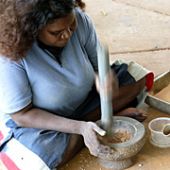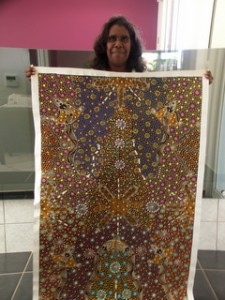Why is Earth Paint Sacred?
Why is Earth Paint Sacred?
Well, it’s a well guarded secret by the Aborigines in Australia and it’s forbidden for anyone to talk about it, but there are many guesses and of course obvious reasons. It was a general belief among Aboriginal cultures that the geographical features of the land were created by a mythical snake as it journeyed over it. The ochre seams were believed to be the “tracks” left by the snake through the earth, and therefore just one remove from touching that god-body.
There are probably as many dreamtime stories about red ochre as there are tribes, but most of them have the spilling of blood as the central theme. For example, one dreamtime story is about a handsome man named Kirkin who would stand on a high boulder at sunrise every morning and comb his golden hair, enjoying all the adulation and attention from others. Except one person, a healer named Wyju, who saw right through to his vanity. Kirkin hated him for this and plotted revenge. He tricked Wyju into leaping into a trap of spiked spears. Kirkin laughed while Wyju writhed bleeding into the earth. Ever since, the Aboriginals have gone to that specific valley for red ochre.
Red ochre is an integral part of the initiation ceremony of young boys when they become men. In Arnhemland, novices are smeared with ochre in sacred clan patterns on their chests, with white clay masks on their faces. The paint is part of the secret initiation. Anthropologists say the red earth represents men’s blood (death) or women’s menstrual blood (birth) but there’s another theory that the iron in the red ochre acts as a kind of magnet to show Ancestors and Aboriginal people the way along sacred paths.
Recently, modern day Aboriginal art has become very popular around the world, selling for large amounts of money in major galleries and museums. But guess what type of paint they use- acrylics! Perhaps this makes it less complicated for them to represent their secret and sacred Dreaming stories for outsiders if the materials themselves are not sacred. As if by changing the paint, the designs begin to lose the things that make them dangerous and powerful.
*info from “Color” by Victoria Finlay


